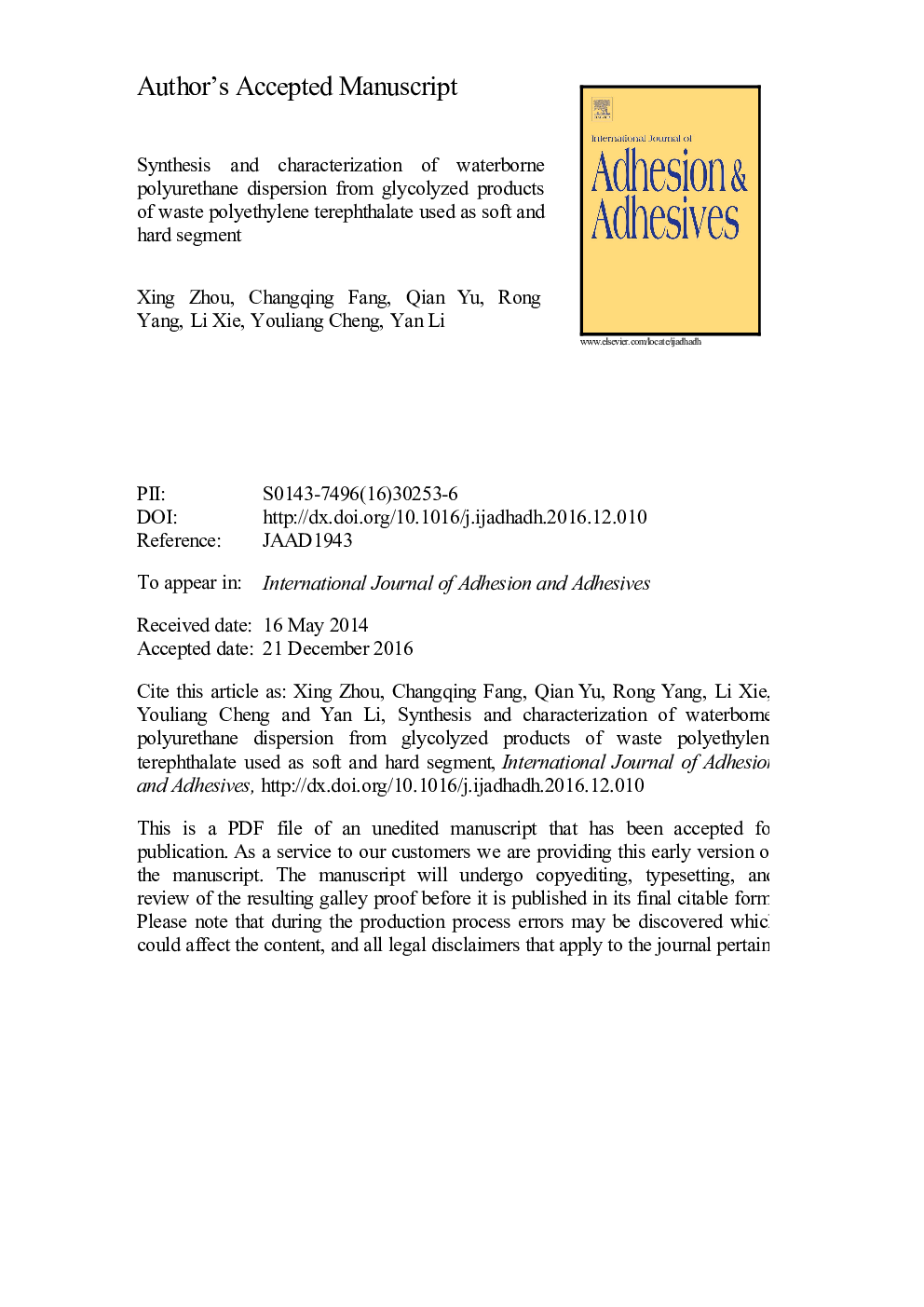| Article ID | Journal | Published Year | Pages | File Type |
|---|---|---|---|---|
| 5014733 | International Journal of Adhesion and Adhesives | 2017 | 33 Pages |
Abstract
Waste polyethylene terephthalate (PET) bottles were collected, cleaned and then depolymerized by glycolysis with neopentyl glycol (NPG) and dipropylene glycol (DPG), in the presence of N-butyl titanate catalyst. The product, named glycolyzed oligoesters, obtained through the depolymerization, were employed respectively in hard segment and soft segment in the synthesis of novel waterborne polyurethane dispersions (PUDs) via a simple and environmentally benign process. In addition, a polyurethane dispersion without glycolyzed oligoesters was synthesized as a comparison. The bulk structure of PET glycolyzed oligoesters and PUDs films were characterized by Fourier transform infrared spectroscopy (FT-IR), H-nuclear magnetic resonance (1H NMR) and Gel permeation chromatography (GPC). The results illustrated that glycolyzed oligoesters were successfully introduced into the hard and soft segment of the polyurethanes. Furthermore, differential scanning calorimetry (DSC) and thermogravimetric analysis (TGA) were used to investigate the thermal properties of the PET glycolyzed oligoesters and PUDs films. The results showed that the thermal resistance of waterborne polyurethanes obtained with glycolyzed oligoesters increased due to lower degrees of phase separation. X-ray diffraction indicated that all synthesized polyurethanes exhibited reduced degrees of orientation. Due to the balance between hard-/soft-segment of the waterborne polyurethane dispersions, the formulations containing glycolyzed oligoesters within the hard segment sections of the polyurethanes provided the best performance.
Related Topics
Physical Sciences and Engineering
Engineering
Mechanical Engineering
Authors
Xing Zhou, Changqing Fang, Qian Yu, Rong Yang, Li Xie, Youliang Cheng, Yan Li,
